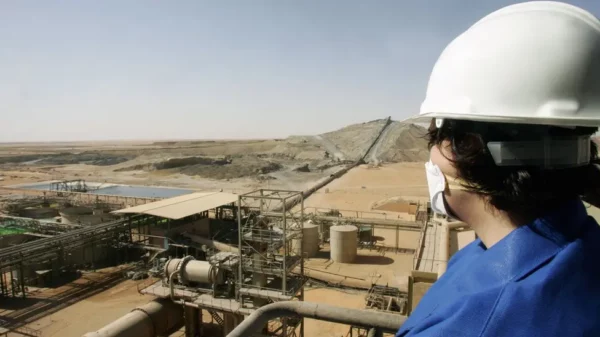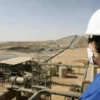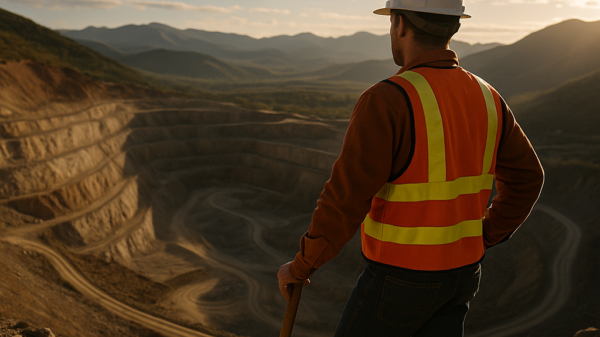Nuclear energy is one of the most sustainable forms of energy. Atoms split in a thermal reactor to create nuclear energy, which creates heat that converts water to steam. This steam then powers a turbine linked to a generator, which then produces electricity. It produces zero carbon dioxide emissions.
Energy production and consumption are on the list of the present sustainable development goals (SDG) erected by the United Stations. One of these goals is called the SDG 7, and its purpose is to provide affordable, reliable, sustainable and modern energy for everyone by the end of the next decade.
This is an achievable goal with infrastructure shifts from over-reliance on traditional fossil fuels to nuclear power.
Governments, investors, consumers and companies across the world are recognizing the value in more sustainable solutions, according to the research and advisory firm, Forrester (NASDAQ:FORR).
Forrester estimates that the United States and European Union alone are spending $1.4 trillion on environmental sustainability and climate adaptation. There is also $17.5 billion venture capital funding for green tech, and the market for green financial instruments is $658 billion. These factors are combining into what Forrester is calling the “green market revolution.”
“Environmental sustainability represents a historic business opportunity for companies to develop new products and services and facilitate or enable a new green market,” said Sharyn Leaver, chief research officer at Forrester. “Forrester’s extensive research on topics including changing consumer attitudes and behaviors, the state of environmental sustainability in the Fortune 200 global, the evolution of green finance and products, and how leaders can incorporate sustainability into their product roadmaps will help companies, government agencies, countries, and cities accelerate their sustainability journeys.”
The Green Market Revolution
The green market revolution will transform the transportation, energy and construction sectors; how we invest in sustainable finance products’ and how we source and deliver sustainable goods and services. Businesses are already pursuing corporate sustainability in all of their products and practices.
Forrester’s 2022 data shows that, among business and tech professionals who indicate that improving sustainability is a priority for their organization, 17% are launching new green products and services.
One of the key changes presently recognized as a requirement for a sustainable future is climate-friendly power generation. That means nuclear power. The stigma surrounding nuclear power involves the notion of environmental catastrophe, owing to the failures at Three Mile Island, Chernobyl and Fukushima. All three of these were cold war relics using unsure and untested technology. The technology has come a long way since then. The primary alternatives to fossil fuels include inefficient wind power, unreliable solar power and potent but limited geothermal, nuclear becomes the strongest and most reliable option.
The geopolitical time might be right for nuclear power. Russian important bans have accelerated energy transitions and self-sufficiency. Western government bans on Russian fossil fuels mean those countries need to find alternatives. Germany accelerated plans to produce 80 per cent of its energy needs from renewable sources by 2030, and 100 per cent by 2035. Finland expanded its nuclear power generation and now even Japan is reconsidering nuclear options.
The future is nuclear and here are four other companies making the rounds in that sector.
Bird Construction partners with Canadian Nuclear Laboratories
Before the reactors can be fired and the energy pumped out to the grid some consideration needs to be made for the buildings the operation will be housed in. That’s where Bird Construction (TSX:BDT) comes in.
The company engaged two strategic delivery partnerships with Canadian Nuclear Laboratories (CNL). The Bird Construction and Bird-Candos CDP joint venture has formalized partnership agreements to provide construction in support of CNL’s corporate strategy.
Bird Construction is a Canadian-based construction company operating coast-to-coast and in all of Canada’s major markets. The company provides a substantial and comprehensive range of construction services for multiple different industries. These include industrial, commercial, institutional and civil infrastructure markets, but also extend to include industrial maintenance, repair and operations services, heavy civil construction, and mine support services; as well as vertical infrastructure including, electrical, mechanical, and specialty trades.
“The collaborative nature of this long-term partnership supports high-performance and efficient project execution. It upholds Bird’s strategy of diversification and delivery of strong results for the long-term,” said Teri McKibbon, president and CEO of Bird.
What is the CNL?
CNL is Canada’s nuclear science and technology organization, and a world leader in the development of nuclear technology. The company uses its expertise to restore and protect the environment through advancing clean energy technology. Atomic Energy of Canada (AECL) contracts out to CNL to manage and operate its nuclear sites across the country.
The contract also includes carrying out AECL’s mandate to handle the government of Canada radioactive waste and decommissioning responsibilities. So AECL owns the sites and nuclear liabilities, but CNL operates them day to day and is responsible for maintenance. CNL operates under a GoCo model, which is short for government-owned but contractor operated.
The majority of the work will be construction and the contract includes work under CNL’s existing $1.2 billion 10-year capital program. This means construction of six facilities representing $2 billion. Also, a newly started multi-billion-dollar program involving infrastructure upgrades and environmental remediation in conjunction with the Port Hope Area Initiative.
Bird will support CNL in pursuit of its organizational objectives, including sustainability, improved engagement with Indigenous Peoples, and economic development.
Read more: Poland selects American manufacturer for country’s first nuclear reactors
Uranium
Uranium is a heavy metal that countries have been using as an energy source for six decades. Martin Heinrich Klaproth, a German chemist, discovered it in 1789. The silvery-white element found in soil, rock and water is now mined either underground or open pit. Afterwards, the extracted ore is crushed and treated in a mill to get the uranium from it.
The mined uranium is then processed, stored and sold as uranium oxide concentrate (U3O8).
Originally used in ceramics and photography, uranium’s true purpose remained uncovered until the the middle part of the 20th century when its potential as an energy source was revealed. Now, it’s uses include generating electricity in commercial nuclear reactors and creating isotopes for the medicine, industry and defence sectors.
The World Nuclear Association released The Nuclear Fuel Report: Global Scenarios for Demand and Supply Availability 2021–2040 in September of last year. According to the report, uranium demand for the world’s reactors will increase to 79,400 metric tonnes of elemental uranium (MTU) by 2030. At present, global uranium demand from reactors is roughly 62,500 MTU.
That makes uranium a potential asset for investment, and the companies involved in its lifecycle are worth a look.
enCore Energy
For example, enCore Energy (TSXV:EU) (OTCQB:ENCUF) entered into agreements to sell certain uranium exploration shares to private British Columbia-based Nuclear Fuels. The exchange will be for shares, royalty interests and production rights in Nuclear Fuels’ properties.
enCore agreed to sell its Belt Line Resources and Hydro Restoration subsidiaries to Nuclear Fuels. Belt Line holds a uranium property in Mohave County, Arizona while Hydro Restoration holds uranium properties in Johnson County and Albany County, Wyoming.
“enCore is dedicated to becoming the next domestic producer of uranium in the United Sates and remains focused on our extensive pipeline of quality development-stage assets in our push towards initial production in 2023 with production ramping up over the years beyond. The sale of our uranium exploration assets to well-managed companies with an option to participate in the production stage is a clear benefit to our shareholders,” said William M. Sheriff, executive chair of enCore Energy.
EnCore touts itself as the most diversified in-situ recovery uranium development company in the United States. It backs this up with solid stats. Approximately 90 million pounds of U3O8 estimated in the measured and indicated categories and 9 million pounds U3O8 estimated in the inferred category. That’s a fair amount of uranium.
“Nuclear Fuels has sound, known management and excellent exploration assets in favorable established jurisdictions such as Wyoming. With enCore’s ownership of 19.9% and a back-in right on the large Kaycee Property, we not only maintain access to production from advancing the property, our balance sheet is strengthened with our share position at a time when nuclear energy is gaining in prominence as a viable, reliable domestic source of energy.”
CGI Federal protects nuclear power from cyber threats
When the first nuclear reactors were built computers weren’t as advanced. Now with the quite real prospect of malcontents gaining access to a resource like power generation, cybersecurity becomes a concern.
That’s why CGI Federal, a subsidiary of CGI Inc (NYSE:GIB) (TSX:GIB.A), received an award from the Nuclear Regulatory Commission (NCR) to prepare it for cyber threats under its Global Infrastructure and Development Acquisition (GLINDA) blanket purchase agreement.
CGI Federal will implement new processes to help NRC develop its defenses, thereby protecting the commission from threats.
“The NRC has made significant investments to evolve its cybersecurity processes and tools. We are pleased to have been part of their journey, which brings CGI’s decades of experience in securing organizations through innovative and advanced cybersecurity services to enhance cyber threat intelligence throughout the NRC. Through this work, CGI will bring a modernized IT environment that advances security monitoring and analysis and mitigates risks across the enterprise,” said Stefan Baker, senior vice president and regulatory agencies programs buisness unit lead at CGI Federal.
What does CGI Federal do?
CGI Federal provides solutions for defense, civilian, healthcare and intelligence operations through select partnerships with federal agencies. Founded in 1976, CGI Federal is an IT and business consulting service. It sports 88,500 consultants and other professionals across the world, and delivers a broad portfolio of services. A few of these include strategic IT, business consulting, systems integration, and intellectual property solutions.
“CGI’s strong history with the NRC Security Operations Center (SOC) program dates back to 2017, when CGI began its support of the SOC Analytics and Incident Response capabilities. Our highly qualified and certified cybersecurity professionals bring decades of experience and innovation that will continuously improve NRC’s security posture, with a strong focus on process evolution utilizing the latest cybersecurity analytics and tools,” said Vishal Ranjan, vice-president and NRC account executive for CGI Federal.
The NRC plays a vital role in the common defense and security of civilian nuclear information. In performing this new work, CGI Federal will employ a Digital Forensics Lab to maintain NRC operations, confidentiality and integrity. This will enable NRC to quickly address insider threat and advanced persistent threats. Further, CGI also will support NRC’s continued adoption of Zero Trust Architecture (ZTA), in compliance with federal mandates.
The agreement has a value of $17.4 million over 16 months and three 12 month option periods














